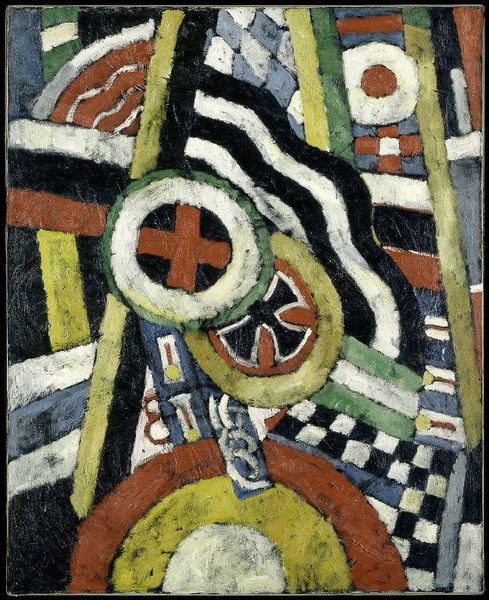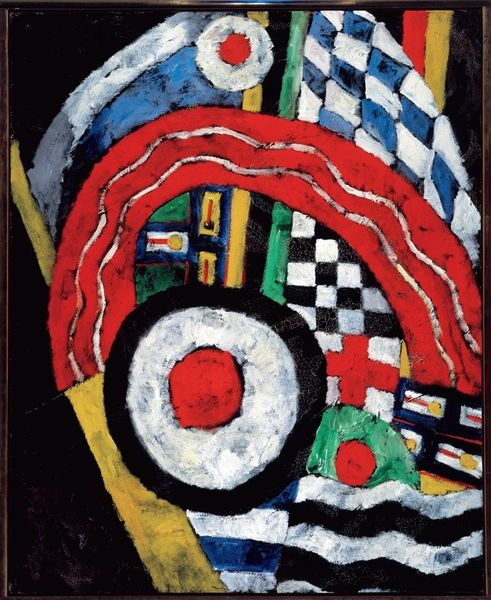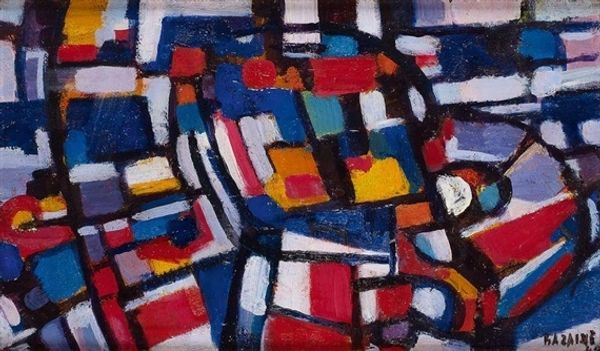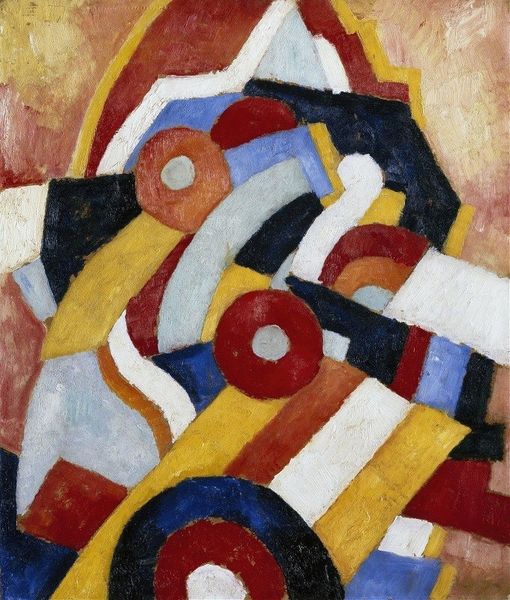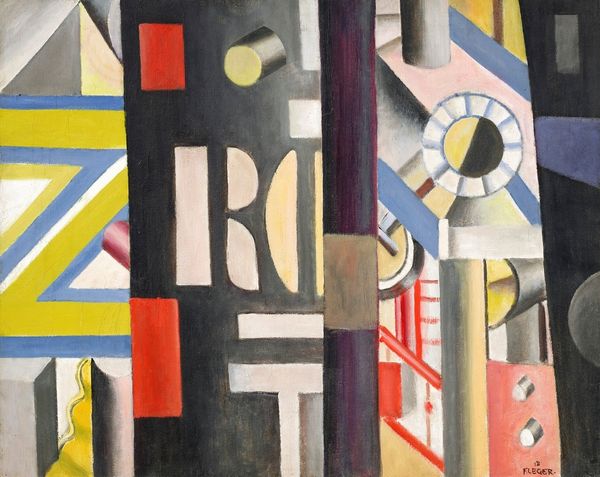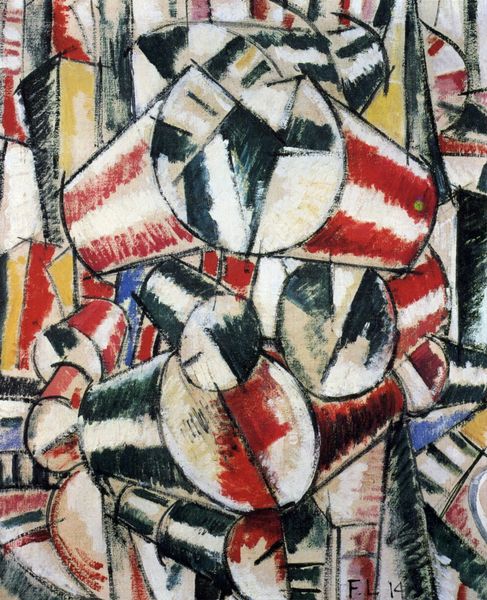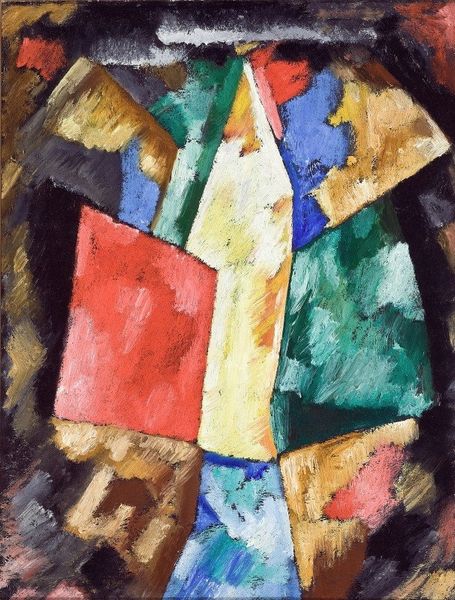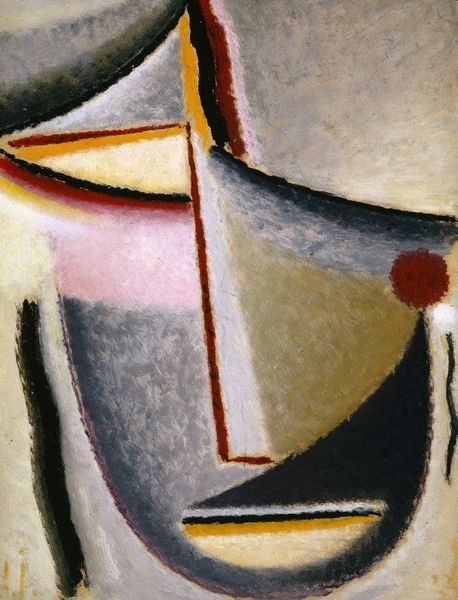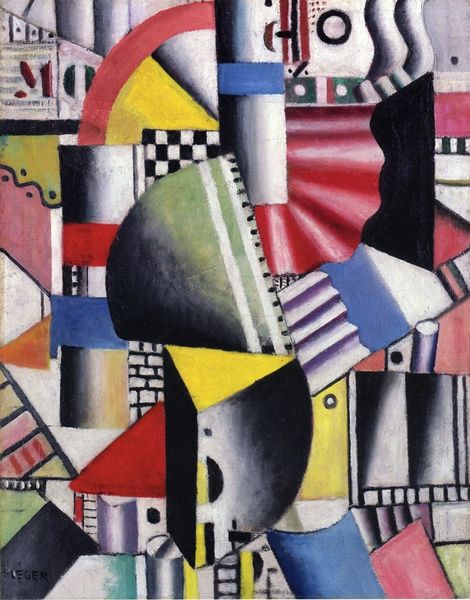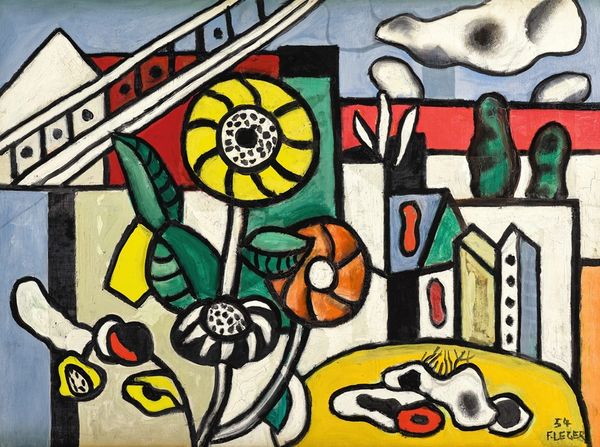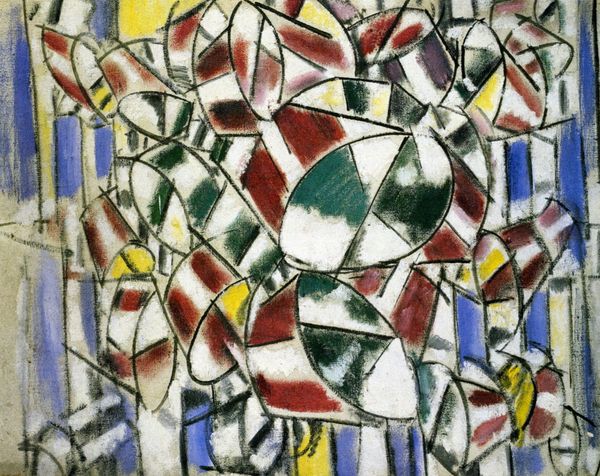
Dimensions: overall: 80.8 × 64.8 cm (31 13/16 × 25 1/2 in.) framed: 101 × 85.1 × 5.7 cm (39 3/4 × 33 1/2 × 2 1/4 in.)
Copyright: National Gallery of Art: CC0 1.0
Editor: This is Marsden Hartley’s "Berlin Abstraction," painted between 1914 and 1915. It’s an oil painting that strikes me as almost chaotic in its arrangement of geometric shapes and bold colors. What do you see in this piece? Curator: I see a powerful visual statement rooted in a very specific moment in history. Remember, this was painted on the eve of World War I, a period of intense political and social upheaval. Hartley was living in Berlin at the time, deeply influenced by German Expressionism. This isn't just about abstract shapes; it’s about capturing the energy, anxiety, and even the militarism that permeated Berlin society then. Notice the iron cross, for example. How does that symbol resonate with you? Editor: It definitely adds a sense of unease. It makes me think about power and national identity, maybe even a kind of aggressive assertion. But it’s all so fragmented. Curator: Exactly! The fragmentation is key. Think of it as Hartley’s way of deconstructing traditional notions of nationhood and identity. He's using abstraction to critique the very systems that were about to plunge Europe into war. What about the other shapes and symbols? Do you find any of them suggestive of something? Editor: Well, the checkered pattern almost looks like a flag, but it's distorted, like a funhouse mirror version of patriotism. Curator: Precisely. And that distortion, that questioning, is what makes this piece so compelling. Hartley's not just creating a pretty picture; he’s engaging in a visual dialogue with the social and political forces of his time. It’s about queerness, about the vulnerability of identity against the backdrop of war, about the rise of nationalism. Editor: I hadn’t considered all the layers of social commentary. Now I see it as more than just an abstract painting; it’s a real expression of a specific time and place. Curator: It shows how art is always interwoven with cultural context and the experience of the artist. Every artwork truly invites a multi-layered investigation.
Comments
No comments
Be the first to comment and join the conversation on the ultimate creative platform.
